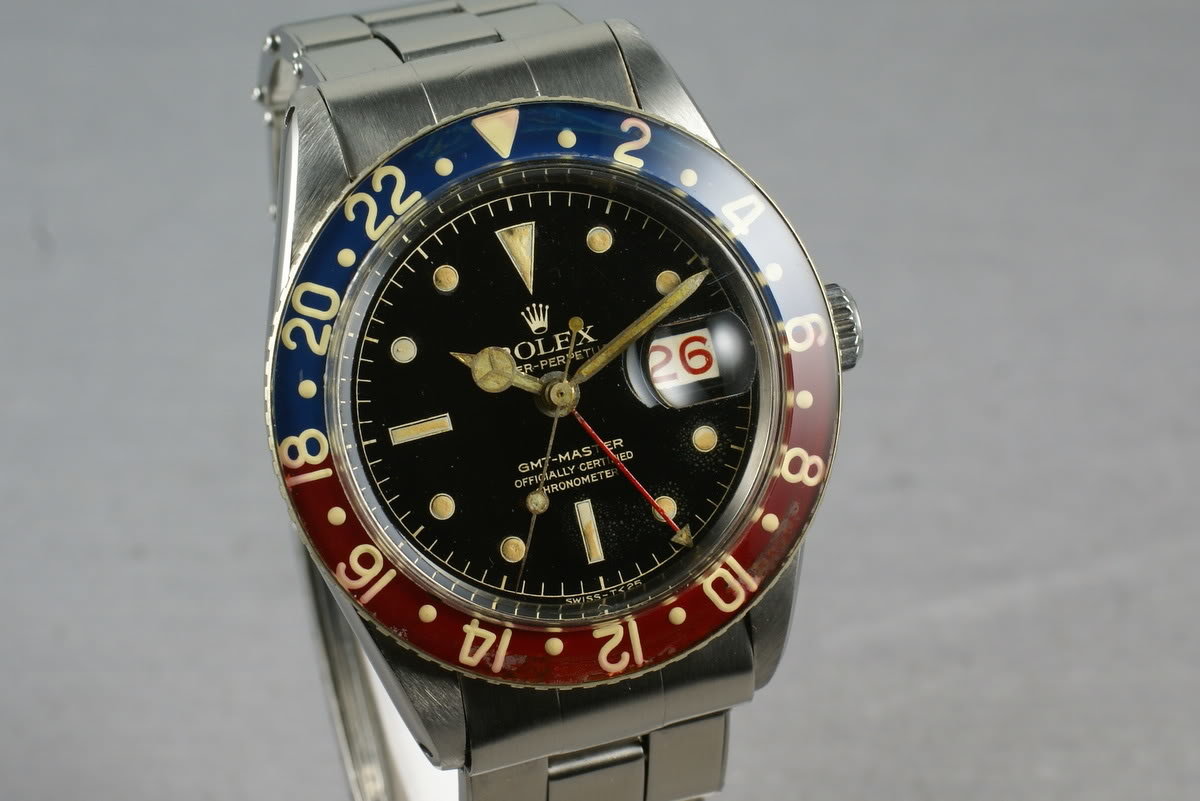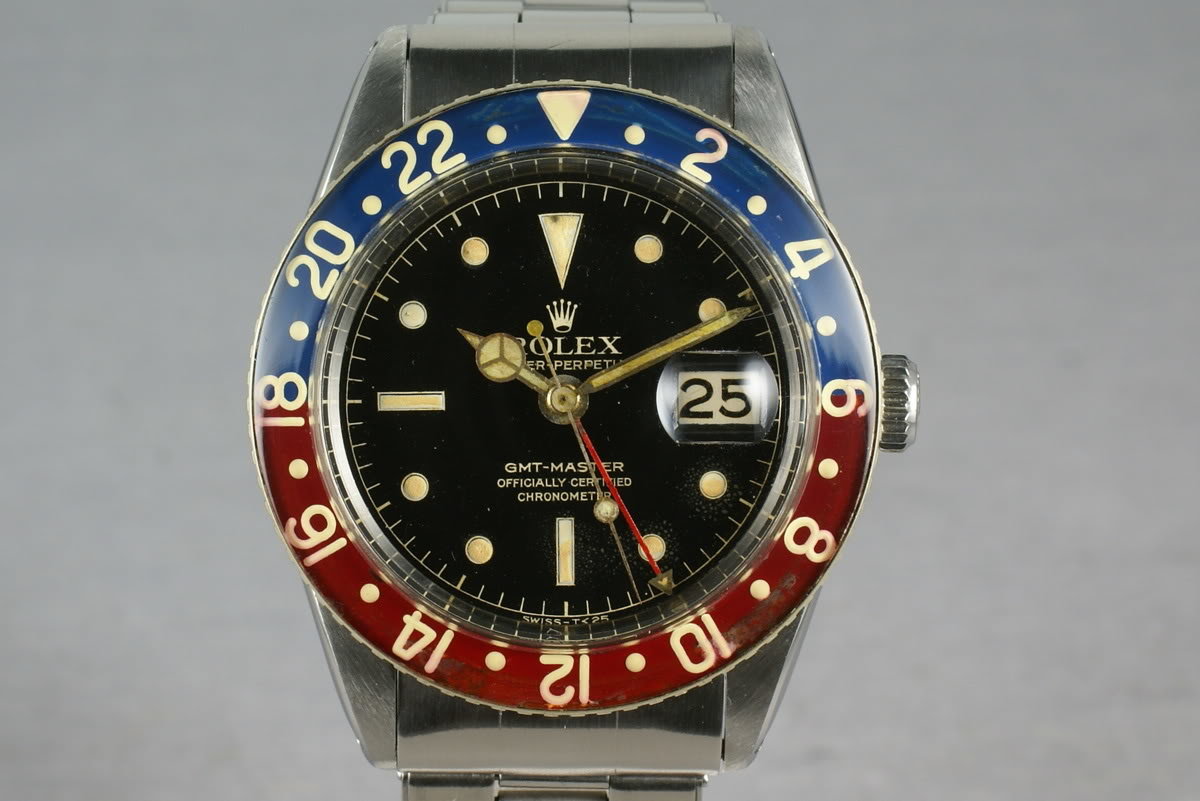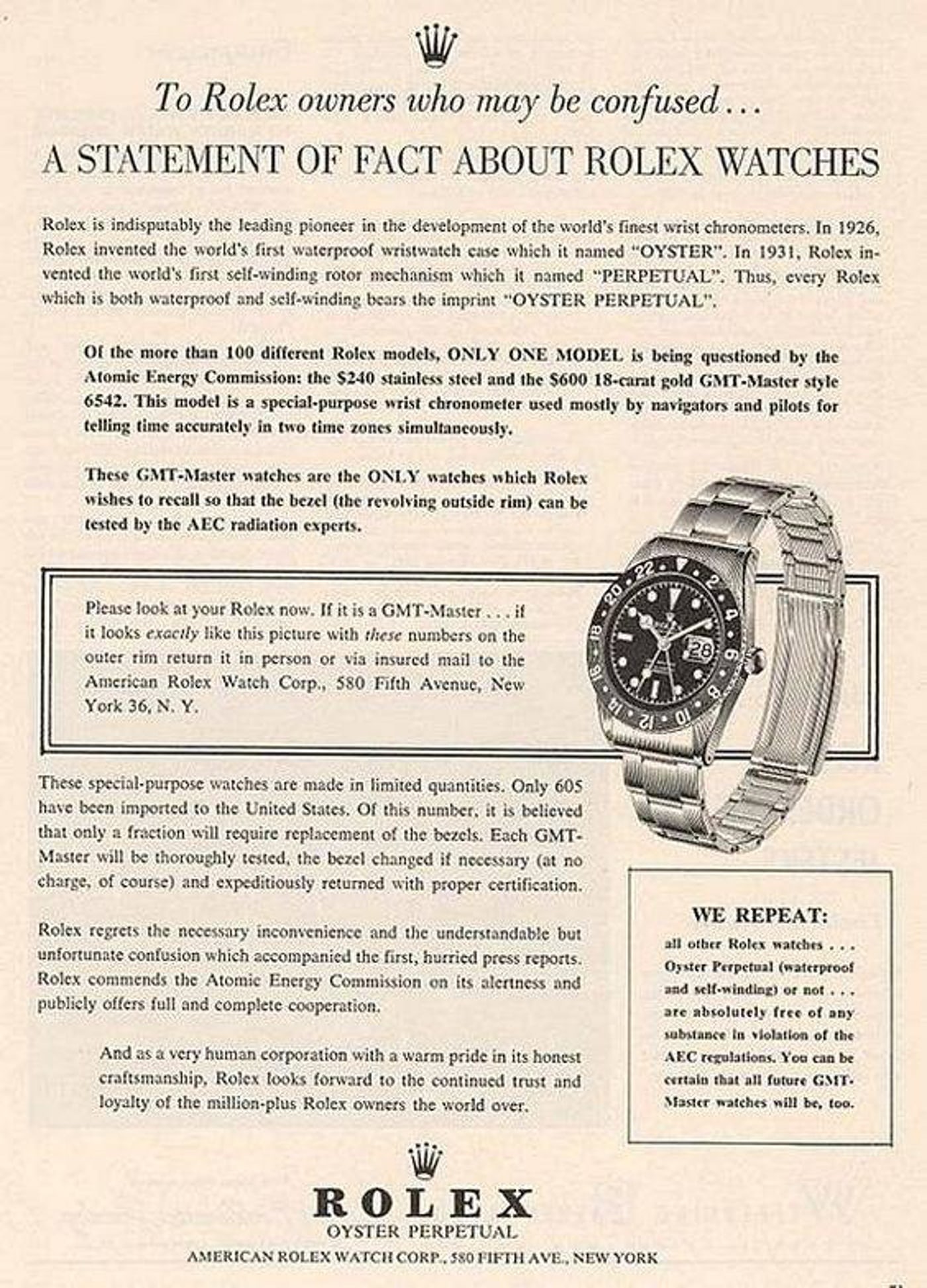
Rolex Bakelite Bezel: Complete History
If you have studied Rolex and its history, you can’t have missed coming across the term ”bakelite”. But what is it and why is it important for Rolex?
Rolex released the first GMT-Master in 1954 with reference number 6542. The GMT-Master was developed at the request of Pan-Am Airlines, who requested Rolex to develop a timepiece that could keep track of multiple timezones simultaneously. This was so that pilots who flew across timezones could keep track of the time at home.
Rolex answered the company’s request and released the GMT-Master 6542. This watch had a bezel insert made of bakelite, made in two colors – blue and red. The bezel was made in two colors so that the pilot could easily distinguish between night and day at home.
The bakelite bezel was equipped with luminous numerals, made with radium. This was to allow the pilots to be able to read the time even in low-light conditions, such as the cockpit.

Quite quickly, the bakelite bezels proved to be brittle and prone to cracking. Furthermore, concerns regarding the radium used were also raised due to it being radioactive. In fact, Rolex made a press release where they recalled all of the 605 Bakelite GMT-Masters that had been exported to the US after the Atomic Energy Commission found that the watch had too high levels of radioactive radiation. As seen in the press released below, Rolex offered to replace the bezels free of charge.
With this in mind, the production period for the bakelite bezels of the GMT-Master 6542 was short. In 1956, Rolex changed the material to aluminum instead.
What is bakelite?
Bakelite is an acrylic. Acrylic is still used in watches today, such as the crystal of the Omega Speedmaster, but Rolex’s bakelite used in their bezels proved not to be very durable.
Rolex bakelite collectibility
The Rolex GMT-Master 6542 had a relatively short production period, and furthermore, Rolex also replaced the bezels of some GMT-Masters. This has resulted in the fact that finding a GMT-Master with bakelite bezel has become increasingly rare. Furthermore, due to bakelite being so brittle, finding one in great condition is very rare.
We can assume that many 6542 owners in the US sent their watches back to Rolex, but far from everyone did. Additionally, this recall has only ben recorded to take place in the US.
Gold and steel
The GMT-Master was actually available in two variants: one in full stainless steel and one in full gold. The full gold version is extremely rare, but also originally featured a bakelite bezel. However, this bezel wasn’t blue and red. To match the gold color, the bakelite bezel was brown. Finding this watch with a bakelite bezel today is almost impossible, with only a few examples occasionally surfacing on auctions and similar.
The aluminum bezels that Rolex changed to were more durable than the previous bakelite inserts. They did not, however, use radium, which means legibility wasn’t as good as with the bakelite bezel. The aluminum bezel also changed the look of the 6542, which has made collectors even more attracted to the original bakelite GMT.
Photos via Hodinkee.com and HqMilton.com.







